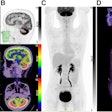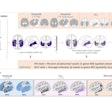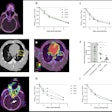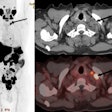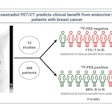The study included 106 female primary breast cancer patients with a mean age of 57 years, who underwent whole-body FDG-PET/CT and also conventional imaging, such as x-ray, mammography, MR mammography, chest x-ray, bone scintigraphy, and ultrasound.
Lead study author Dr. Till-Alexander Heusner and colleagues from the Institute of Diagnostic and Interventional Radiology at the University of Düsseldorf evaluated diagnostic accuracy based on factors such as tumor detection rate, correct assessment of primary lesion focality, and the detection rates of lymph node and distant metastases.
Using histopathology, imaging, or clinical follow-up as their standard of reference, their analysis found that FDG-PET/CT was significantly more accurate for detecting axillary lymph node and distant metastases, with no significant differences in assessing the primary tumor and extra-axillary lymph node metastases.
"Due to the combination of morphological and functional information, whole-body FDG-PET/CT has shown to be very effective when it comes to the detection of breast cancer metastases," Heusner said. "Previously undetected lesions, especially lymph node metastases and distant metastases, are detected."
Management plans for 15 patients (14%) were altered based on FDG-PET/CT findings, including three patients with axillary lymph node metastases, five with extra-axillary lymph node metastases, four with distant metastases, and three with synchronous malignancies.
"That is a relevant number of patients who otherwise would not have been treated stage-adapted," Heusner added. "A personalized stage-adapted therapy clearly may lead to a better chance for cure or survival."
Heusner and colleagues are advancing this study by adding PET/MRI to their research, which has the advantages of high soft-tissue contrast and functional imaging.
"We hope especially breast cancer patients will benefit from this new modality, as we expect to more accurately detect metastases in the liver, brain, and bone -- sites extremely important for breast cancer metastases," Heusner said. "Moreover, we will work on a one-stop protocol, including dedicated PET/MR mammography and combining it with a whole-body investigation to cover the other organs."










